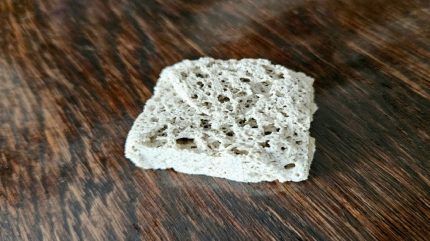
Researchers at Germany’s Fraunhofer have developed a method to create construction materials using cyanobacteria, formerly known as blue-green algae.
The ‘BioCarboBeton’ project is led by Fraunhofer Institute for Ceramic Technologies and Systems IKTS and Fraunhofer Institute for Electron Beam and Plasma Technology FEP.
It introduces a biologically induced production method that not only avoids carbon emissions but also uses and sequesters greenhouse gases.
Cement, a key ingredient in concrete, contributes significantly to climate change. Cement production led to 20 million tonnes of carbon dioxide (CO₂) emissions in Germany in 2018, about 10% of the country’s industrial emissions.
Cyanobacteria, or bacterial cultures, proliferate in a nutrient solution through photosynthesis. Under the right conditions, they form limestone structures known as stromatolites.
By adding aggregates and fillers such as sand and basalt, or renewable raw materials, the result is rock-like structures.
This process contrasts with traditional concrete production, which releases CO₂. Instead, this new method captures CO₂ within the resulting biogenic rock material.
Products can be tailored for various uses such as insulation, bricks, formwork filling, and even mortar or stucco.
Fraunhofer IKTS Dr Matthias Ahlhelm oversees the development of materials and processes, the selection of fillers and binding agents, and the design of forms and structures.
Ahlhelm said: “The developing solid structure is still porous during the process, so light enters the inside and drives the carbon dioxide fixation through limestone mineralisation. We can stop the process by removing the light and moisture or changing the temperature.”
Meanwhile, Dr Ulla König from Fraunhofer FEP manages the cyanobacteria cultivation, microbiological analysis, and scaling of biomass production.
Ahlhelm and König jointly said: “Our method shows the huge potential that can be unlocked through biologising technology. Overall, our BioCarboBeton project is an opportunity for a big step toward a circular economy in the construction industry and beyond.”
The project aims to define the materials’ properties and scale up the processes.
Having tested the process, the Fraunhofer team is now working on scaling production and defining the materials’ properties to enable cost-effective, large-scale manufacturing of these eco-friendly materials.



